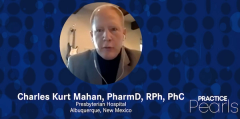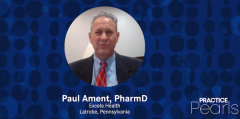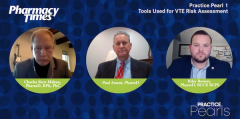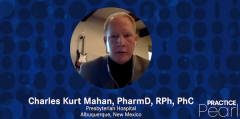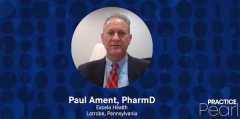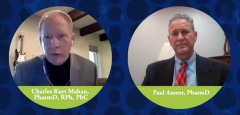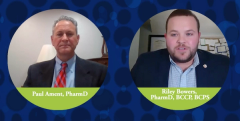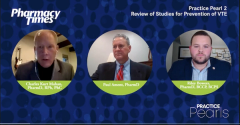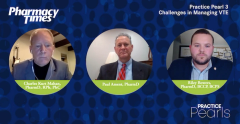
Overview of Venous Thromboembolism
Episodes in this series

Charles Mahan, PharmD, RPh, PhC, makes introductions, and Paul Ament, PharmD, provides an overview of venous thromboembolism [VTE].
Charles Kurt Mahan, PharmD, RPh, PhC: Hello, and welcome to this Pharmacy Times® Practice Pearls® program titled “Best Practices for the Management of Venous Thromboembolism.” My name is Charles Kurt Mahan, and I’m a cardiac critical care clinical pharmacist at Presbyterian Hospital in Albuquerque, New Mexico. Joining me in this discussion are my colleagues Paul Ament, clinical pharmacy manager and faculty instructor in family medicine residency at Excela Health in Latrobe, Pennsylvania, and Dr Riley Bowers, who is a clinical assistant professor of pharmacy practice at Campbell University in Fayetteville, North Carolina.
Today we are going to discuss a number of topics pertaining to the prevention and management of thromboembolism, including recommendations for hospitalized acutely ill medical or nonsurgical patients, best practices for VTE [venous thromboembolism] prevention, options for VTE treatment, and the various challenges in education. Let’s get started on our first topic.
If we could, let’s discuss the definition of venous thromboembolism and some of its characteristics. We will also discuss thromboprophylaxis and approximately how many cases are occurring in the United States annually, and we’ll discuss the associated costs with VTE. Let’s start with Dr Ament.
Paul Ament, PharmD: VTE consists of the conditions DVT [deep venous thrombosis] and PD [pulmonary embolus]. There are approximately 900,000 cases reported every year. Patients presenting with symptoms for DVT may present with unilateral leg swelling. They may have cramping in the calf or the thigh. We even sometimes mischaracterize it as a cellulitis that doesn’t improve, then we do a doppler and show a DVT. For pulmonary embolus, there is certainly a wide variety of presenting symptoms. Some patients will be asymptomatic, so almost an incidental finding on a CT scan.
Other patients may describe feeling an ice pick every time they breathe. I recently worked with a retired nurse who hadn’t felt good for a few days. She had some challenges carrying a laundry basket up the stairs, and she finally stated to me that she had this sense of doom. She was out shopping and had syncope, and the ambulance was called. She had a saddle pulmonary embolus, so we did a thrombolysis on her, and I was then involved with her transition home. There is a wide range of symptoms with pulmonary embolus.
It is very common. In fact, about 100,000 patients die every year of VTE-related complications. Putting that into perspective, that would be more patients than the number of people who die in auto accidents, from breast cancer, and from HIV combined. What may be an even more startling way to look at that is this: It would be equivalent to 1 jumbo jet crash per day. You could imagine what changes would occur in the aviation industry if there was 1 jumbo jet crash per day, but that is what the numbers show with it.
From a cost standpoint, depending on which article you read, there are up to approximately $70 billion in expenses, and it’s been projected that half of that—almost $40 billion—may be unnecessary, avoidable costs. I certainly feel that the main driver is going to be what I define as hotel costs: the length of stay. Therefore, anything we can do to facilitate the transition of home care and use the oral DOACs [direct oral anticoagulants] is going to reduce the overall cost of therapy significantly.
Newsletter
Stay informed on drug updates, treatment guidelines, and pharmacy practice trends—subscribe to Pharmacy Times for weekly clinical insights.

